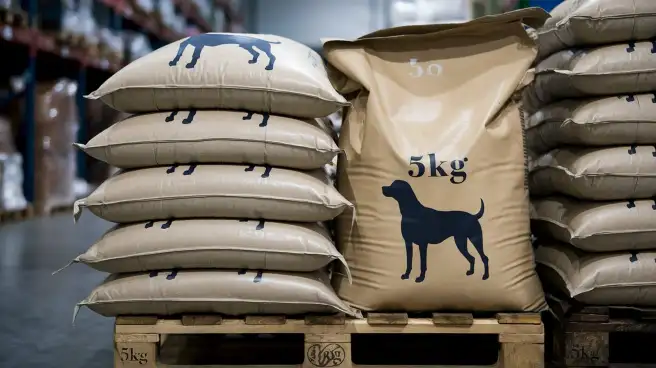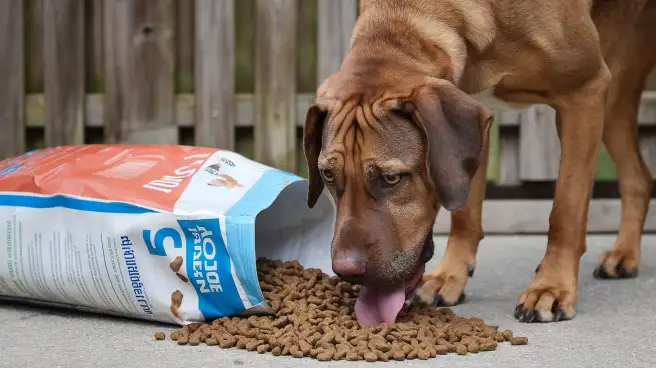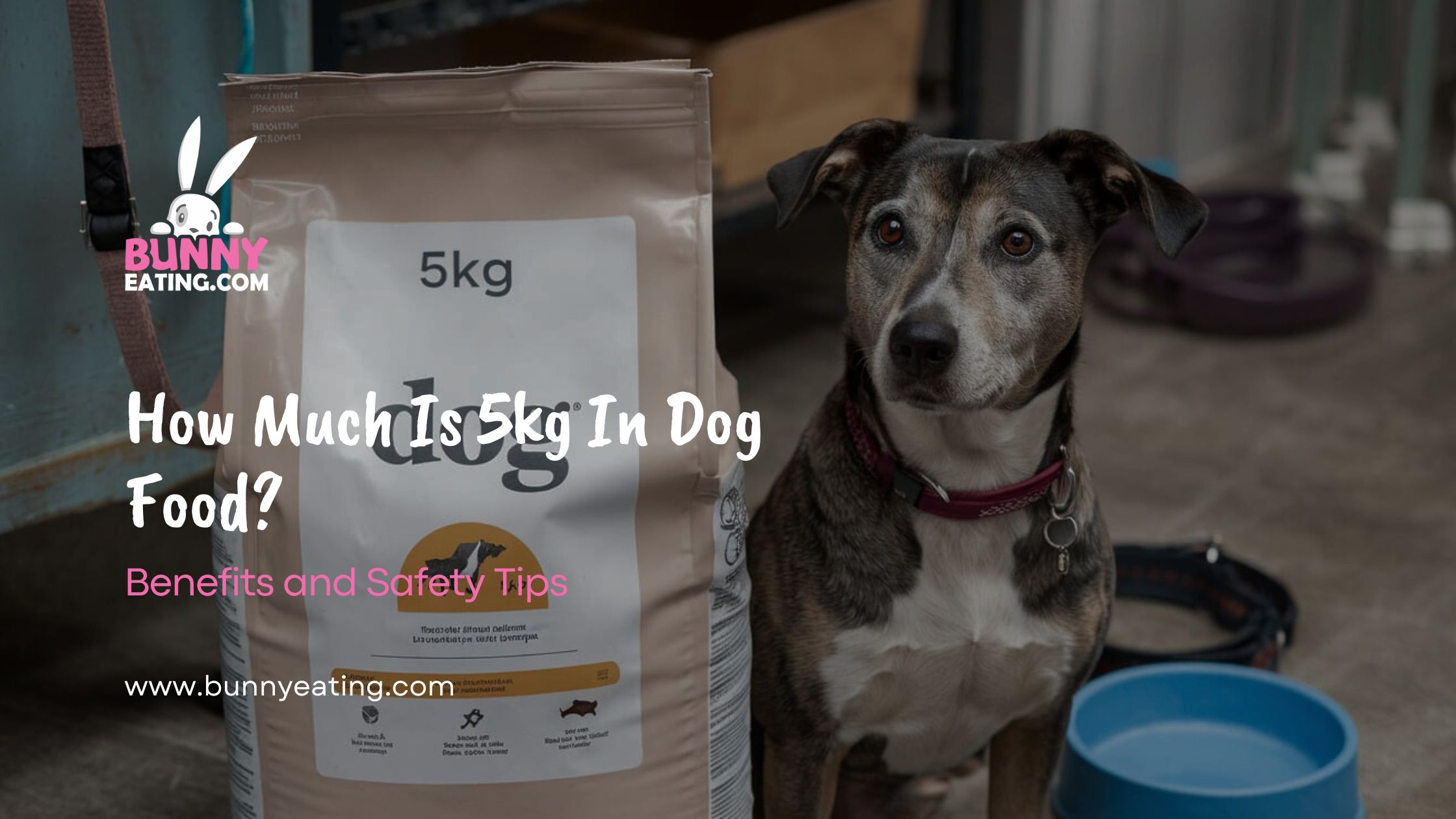Raw Dog Food Feeding Guide
Raw feeding has gained popularity among dog owners who believe it provides a more natural diet for their pets. A raw dog food diet typically consists of uncooked meat, bones, fruits, and vegetables. When considering how much 5kg of raw food translates to in terms of feeding, it’s important to remember that raw food is often more nutrient-dense than processed kibble, so portion sizes may differ.
For those new to raw feeding, it’s crucial to calculate portions based on your dog’s body weight and activity level. Generally, adult dogs should eat about 2-3% of their body weight in raw food daily. So, if you have a 50-pound dog, they might need about 1-1.5 pounds of raw food per day. This means 5kg of raw dog food could last approximately 7-10 days for a dog of this size. However, always consult with a veterinarian or canine nutritionist to ensure your raw dog food diet meets all of your pet’s nutritional needs.
How Much Raw Food Should I Feed My Dog By Weight (KG)?
Determining the right amount of raw food for your dog involves considering their weight in kilograms. A general rule of thumb is to feed 2-3% of the dog’s ideal body weight daily. For example, a dog weighing 20kg (about 44 pounds) would need approximately 400-600 grams of raw food per day. This calculation helps maintain a healthy weight and provides adequate nutrition based on your dog’s energy levels.
It’s important to note that these are general guidelines and may need adjustment based on factors such as age, activity levels, and overall health. Puppies, for instance, typically require more food relative to their body weight compared to adult dogs, often needing 5-10% of their body weight in food daily. Senior dogs or those with lower activity levels might need less. Always monitor your dog’s body condition score (BCS) and consult with your vet to fine-tune the feeding amount.
Are You New To Feeding A Raw & Fresh Diet?

Transitioning to a raw diet can be exciting but also daunting for new pet owners. When switching from kibble to raw food, it’s essential to do so gradually to avoid digestive upset. Start by replacing about 25% of your dog’s regular food with raw food, and increase this proportion over a week or two until you’ve fully transitioned to the raw diet.
One common mistake to avoid is assuming that all raw diets are created equal. It’s crucial to ensure that your dog’s raw meals are complete and balanced, meeting all their nutritional needs. This often involves following AAFCO recipes or consulting with a pet nutritionist. Some pet owners opt for the BARF (Biologically Available Raw Food) method, which includes a mix of raw meaty bones, muscle meat, organs, and some plant matter. Remember, variety is key in a raw diet to provide a wide range of nutrients.
How Active Is My Dog?
A dog’s activity level plays a significant role in determining their food intake. Highly active dogs, such as working dogs or those participating in agility sports, will naturally require more calories than sedentary dogs. For instance, a border collie herding sheep all day will need substantially more food than a similar-sized dog who spends most of their time lounging indoors.
To assess your dog’s activity level, consider their daily routine. Do they go on long walks or runs? Do they spend hours playing fetch or participating in dog sports? Or are they more of a couch potato? Overweight dogs may need their portions reduced and their exercise increased, while underweight dogs might need more calories. It’s always a good idea to consult with your veterinarian to determine the ideal feeding schedule and portion size based on your dog’s specific energy needs and lifestyle.
How Many Times Per Day?
The frequency of feeding is just as important as the amount when it comes to maintaining your dog’s health. Most adult dogs do well with two meals a day, typically in the morning and evening. This feeding schedule helps regulate their digestion and energy levels throughout the day. However, some dogs may benefit from different feeding patterns.
Puppies, for example, often require more frequent meals – usually three to four times a day – to support their rapid growth and high energy needs. On the other hand, some owners prefer free-feeding, where food is left out all day for the dog to eat as they please. While this can work for some dogs, it’s generally not recommended as it can lead to overeating and obesity. Sticking to a consistent feeding schedule helps with house training and allows you to monitor your dog’s appetite, which can be an indicator of their overall health.
What Should I Feed My Dog?

Choosing the right food for your dog can be overwhelming with the variety of options available. The main types of dog food include dry kibble, wet or canned dog food, raw dog food, and homemade dog food. Each has its pros and cons, and the best choice often depends on your dog’s individual needs, your lifestyle, and your budget.
Dry kibble is convenient and helps clean teeth, while wet food can be more palatable and provide extra hydration. Raw diets are praised for their natural approach, but require careful preparation to ensure nutritional balance. Homemade dog food allows for complete control over ingredients but needs to be carefully formulated to meet all nutritional requirements. Regardless of the type you choose, look for foods that meet AAFCO standards and consult with your vet to find the best option for your pet’s specific needs.
What Food Do I Feed A Puppy?
Puppies have unique nutritional needs to support their rapid growth and development. A puppy feeding chart is an essential tool for ensuring your young dog gets the right amount of food. Puppies typically need more calories per pound of body weight than adult dogs, and they require food specifically formulated for growth.
When selecting puppy food, look for options that are rich in protein, fatty acids, and essential nutrients like calcium for bone development. Most puppies should be fed three to four times a day until they’re about six months old, after which you can transition to twice-daily feeding. It’s crucial to follow the feeding guidelines on the food packaging, adjusting as necessary based on your puppy’s growth rate and body condition. Remember, overfeeding can lead to rapid growth, which may increase the risk of orthopedic problems in certain breeds.
Dog Feeding Chart: How Much Should I Feed My Dog?
A dog feeding chart is a valuable resource for pet owners, providing guidelines on how much to feed based on a dog’s weight and age. Here’s a simple chart to give you an idea:
| Dog Weight (lbs) | Daily Food Amount (cups) |
|---|---|
| 3-12 | 1/3 – 1 |
| 13-20 | 1 – 1 1/3 |
| 21-35 | 1 1/3 – 2 |
| 36-50 | 2 – 2 2/3 |
| 51-75 | 2 2/3 – 3 1/3 |
| 76-100 | 3 1/3 – 4 1/4 |
| 100+ | 4 1/4 + 1/4 per 10 lbs |
This chart is a general guide and may need adjustment based on factors like activity level, age, and health status. Always start with the recommended amount and adjust based on your dog’s body condition score (BCS) and energy needs.
What Factors Impact How Much to Feed a Dog?
Several factors influence how much you should feed your dog. Age is a crucial factor, as puppies, adults, and senior dogs have different nutritional requirements. Breed size also plays a role, with large breeds often needing more food than small breeds relative to their weight.
Health conditions can significantly impact feeding amounts. Dogs with certain medical issues may require special diets or adjusted portions. Activity levels are another key factor – a working dog will need more calories than a lap dog. Pregnancy and lactation in female dogs also increase caloric needs. Lastly, the type of food matters; high-quality, nutrient-dense foods often require smaller portions than lower-quality options. Regular check-ups with your vet can help you adjust your dog’s diet as needed based on these factors.
What Are Dog Feeding Charts?

Dog feeding charts are tools provided by pet food manufacturers to help owners determine appropriate portion sizes. These charts typically consider a dog’s weight and sometimes age to suggest daily feeding amounts. They’re usually found on dog food packaging or the manufacturer’s website.
While these charts are helpful starting points, they shouldn’t be followed blindly. They often provide ranges rather than exact amounts, and it’s up to the owner to fine-tune based on their dog’s individual needs. Factors like activity levels, metabolism, and health status aren’t accounted for in general feeding charts. It’s important to use these charts as guidelines, monitor your dog’s weight and body condition, and adjust portions as necessary to maintain optimal health.
How Often Should I Feed My Dog?
The frequency of feeding depends largely on your dog’s age and lifestyle. Adult dogs typically do well with two meals a day, spaced about 12 hours apart. This routine helps regulate their metabolism and prevents hunger-related behavior issues. Some owners prefer to feed once daily, but this can lead to increased hunger and potential overeating.
Puppies require more frequent feeding due to their higher energy needs and smaller stomachs. A typical feeding schedule for puppies might look like this:
- 8-12 weeks: 4 meals per day
- 3-6 months: 3 meals per day
- 6-12 months: 2 meals per day
Senior dogs often benefit from smaller, more frequent meals to aid digestion. Some may do well on 3-4 small meals a day. Regardless of age, consistency in feeding times helps establish a routine and can aid in house training and behavior management.
Why Does My Dog’s Food Amount Matter?
The amount of food your dog consumes directly impacts their health and well-being. Overfeeding can lead to obesity, which is associated with numerous health problems including joint issues, diabetes, and reduced lifespan. On the other hand, underfeeding can result in malnutrition, weakened immune system, and lack of energy.
Proper portioning helps maintain a healthy weight, which is crucial for your dog’s overall health. It also allows you to monitor your dog’s appetite, which can be an indicator of their well-being. Sudden changes in appetite might signal health issues that require veterinary attention. Additionally, consistent portion control helps in managing your pet food budget and reduces waste. By understanding and implementing appropriate feeding amounts, you’re taking a significant step in ensuring your dog’s long-term health and happiness.
Conclusion
Understanding how much 5kg is in dog food helps you make sure your dog stays healthy. It is important to know the right amount to feed your dog. This helps your dog get the right nutrients and stay fit. Always follow the feeding guidelines on the package. This way, you can be sure you are giving the correct amount of food to your dog.
When you buy 5kg of dog food, it should last a certain amount of time, depending on your dog’s size and how much they eat each day. It is good to keep track of how long the food lasts so you know when to buy more. This helps you always have enough food for your dog.
FAQs
How much dog food for 5kg?
A 5kg dog usually needs about 100-150 grams of food per day, depending on the food type and activity level.
How long does a 5kg dog food last?
A 5kg bag of dog food can last around 33-50 days for a small dog, depending on daily intake.
How much dog food per weight kg?
Dogs typically need about 20-30 grams of food per kilogram of body weight daily.
How many litres is 10kg of dog food?
10kg of dog food is roughly equal to 20-25 litres, depending on the kibble size and density.

Aledon is the author at Bunny Eating, specializing in pets. With a deep understanding of pet breeds, behavior, food, and health, Aledon provides expert advice and valuable insights to help you care for your furry friends.











